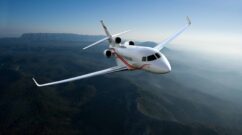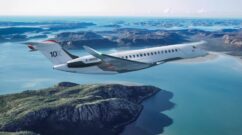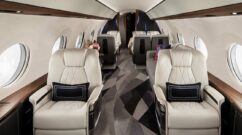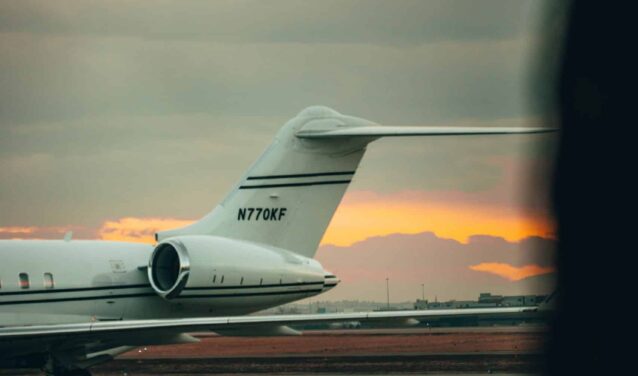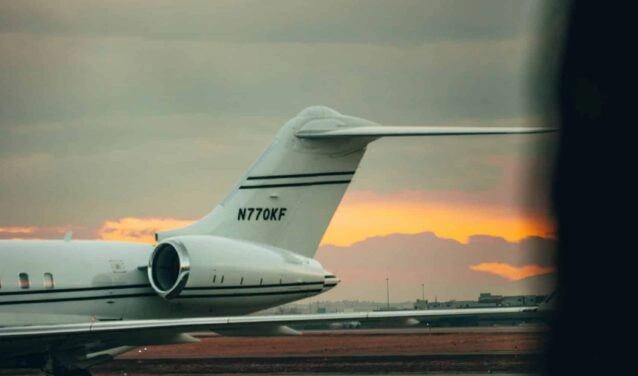
Have you just purchased a private jet, a business jet or even an airliner fitted out in VIP configuration? Congratulations! Whether you’re flying for business or pleasure, there’s one essential step before you can take to the skies: registering your aircraft in France.
This administrative procedure, often perceived as complex, is nonetheless essential to ensure that your aircraft complies with French and European civil aviation requirements. In particular, it officially identifies your aircraft, guarantees its traceability and authorizes its legal operation in airspace.
But how do you register a private aircraft in France?
What are the steps to follow, the documents to provide, and the costs involved? Which organization should you contact? And how long does it take?
At AEROAFFAIRES, we’ve been helping aircraft owners every step of the way for over 30 years. To make your life easier, we’ve designed this comprehensive, practical guide as a step-by-step guide to help you register your private aircraft with complete peace of mind.
What is private aircraft registration?
Registration of a private aircraft is a compulsory procedure governed by law. It involves registering the aircraft in the national civil aviation register of the country in which it is operated. In France, this authority is the Direction Générale de l’Aviation Civile (DGAC).
Each registered aircraft is assigned a unique identifier made up of letters and numbers. This identifier is visible on the aircraft’s fuselage, and also appears on all official documents, such as flight plans, airworthiness certificates and insurance documents.
The main aim of this procedure is to ensure that the aircraft complies with the safety, maintenance and traceability standards imposed by aviation regulations. Registration also makes it easy to identify the aircraft’s owner in the event of an inspection, incident or sale.
So it’s an essential step towards flying legally and with complete peace of mind, whether for personal or professional purposes.
Why do I need to register my private aircraft?
Registration is important, because it enables the aircraft to be tracked in the air traffic control system. It also guarantees that the aircraft complies with current safety standards. Registration of private aircraft enables the aircraft to be identified for maintenance and repair purposes, as well as for insurance purposes.
In addition, registration enables us to control the use of the aircraft, particularly in terms of compliance with civil aviation regulations and the limitation of noise and environmental pollution.
Finally, it enables the aircraft to be identified in the event of a crash, accident or fire.
How much does it cost to register a private aircraft?
Private aircraft registration must be renewed regularly. If the aircraft is sold to a new owner, or if it is operated in another country, it can be transferred.
The cost of registering a private aircraft varies according to the country where the aircraft is registered. Registration fees can include administrative costs, inspection fees and taxes.
In France, for example, the cost of registering a private aircraft depends on its maximum take-off weight:
- For a plane weighing less than 2 tonnes, the registration fee is around 60 euros.
- For an aircraft weighing over 2 tonnes, the cost can rise to several hundred euros.
The DGA website announces a registration fee of €91
Where to register a private aircraft in France?
In France, private aircraft are registered with the Direction Générale de l’Aviation Civile (DGAC). This is the competent authority for civil aviation in France.
However, it is the International Civil Aviation Organization (ICAO) that governs the rules governing registration.
To register a private aircraft in France, you need to fill out a registration application form. This can be obtained from the DGAC or downloaded directly from their website.
The file is accompanied by a number of documents (see list below). These include the aircraft’s certificate of airworthiness and certificate of conformity.
Once the file is complete, it must be sent to the DGAC at the following address
DGAC – DTA/SDT/3
Bureau immatriculation des aéronefs
50 rue Henry Farman
75720 PARIS Cédex 15
This organization examines the application for registration. If the application is accepted, the aircraft will be registered. You can use it in France.
How is private aircraft registered?
ICAO is responsible for defining the standards governing the size, location and format of aircraft registration. The registration format comprises the first characters representing each country’s ICAO code.
This is followed by the country-specific identification code, made up of letters or numbers. If the identification code begins with a letter and not a number, a hyphen must be added before the letter.
Registration is unique. As mentioned above, it consists of a series of letters and numbers. It must be visible on the aircraft’s fuselage. In particular, it must be visible in the vicinity of the aircraft’s engines.
In addition, a plate, designed not to melt in the event of an aircraft fire, must contain the registration number. This identifies the aircraft.
Each country has its own distinctive letter. For example, if you register your private plane in France, the registration will begin with the letter F.
Here are some other examples:
- OE for Austria
- G for the United Kingdom
- N for United States
- D for German registration
- HB for Switzerland.
How do I register a private aircraft in France?
Registering a private aircraft involves several steps. Here are the main steps involved in registering a private aircraft in France:
- Applying for registration: The first step is to apply for registration with the Direction Générale de l’Aviation Civile (DGAC) by filling in the form.
- Check registration availability: The DGAC checks the availability of the requested registration and informs you accordingly.
- Payment of registration fees : You will have to pay a registration fee which varies according to the size of your aircraft. Fees can be paid online or by cheque.
- Airworthiness certification: Before you can register your aircraft, you must obtain airworthiness certification. This involves an inspection of the aircraft by a DGAC inspector. If the aircraft complies with safety standards, you will receive an airworthiness certificate.
- Final registration: Once you have received certification of airworthiness, you can apply for final registration of your aircraft by providing the necessary documents, including the certificate of airworthiness and certificate of conformity.
- Obtaining a license plate: Once you’ve obtained your final registration, you’ll receive a license plate to install on your aircraft.
Once these steps have been completed, you can fly your registered aircraft.
What documents do I need to register a private aircraft in France?
Here are the documents you need to register your private aircraft in France.
1. Certificate of airworthiness
This certificate is issued by the Direction Générale de l’Aviation Civile (DGAC). This is an official document issued by the Direction Générale de l’Aviation Civile (DGAC) in France.
It certifies an aircraft’s ability to fly safely. After a thorough inspection of the aircraft by a DGAC inspector, the certificate is issued. The inspector checks that the aircraft complies with current safety standards.
Valid for a fixed period, it must be renewed regularly. It is essential if the aircraft is to be used for private or commercial flights.
Without this certificate, the aircraft cannot be legally operated or registered.
2. Aircraft certificate of conformity
The manufacturer or importer’s representative issues this certificate. The aircraft certificate of conformity is a document certifying that the aircraft complies with the following standards:
- design
- manufacturing
- safety standards set by the relevant certification authority.
This document is generally issued by the aircraft manufacturer or its authorized representative. Essential for aircraft registration and entry into service, it must include detailed information on the aircraft, such as :
- serial number
- model, equipment
- technical specifications, etc.
Finally, it includes information on compliance tests carried out on the aircraft. These tests verify that the aircraft complies with applicable safety standards.
3. Aircraft non-gage certificate
This is a certificate issued by the prefecture. Issued by the prefecture in France, the certificat de non-gage is an official document. It certifies that an aircraft or property is not subject to any opposition from creditors or the tax authorities.
Registration of a private aircraft requires a certificate of non-gage. This guarantees that the aircraft is not encumbered by debts or charges that could compromise its sale or use.
The owner of the aircraft must apply for this certificate less than 15 days before applying for registration.
It is important to note that the absence of a certificate of non-registration may delay or even prevent the registration process.
4. Other documents to enclose :
When applying to register your unit, other documents are required. These include
- Cerfa n° 15992*01 registration application form.
- Valid aviation liability insurance certificate.
- Title deed or bill of sale for the aircraft.
- Copy of the aircraft owner’s passport.
- The aircraft owner’s proof of address.
How long does it take to register a private aircraft in France?
The time required to register a private aircraft in France depends on a number of factors:
- availability of the necessary documents
- the time required for technical inspections
- processing of administrative requests, etc.
In general, the registration process can take several weeks or even months, depending on the complexity of the file. Delays related to the availability of documents or the scheduling of inspections can delay registration.
Start the registration process as soon as possible. Gather all the necessary documents and make an appointment with the relevant authorities for technical inspections.
This will reduce waiting times. This will ensure that your vehicle is registered as quickly as possible.
What are the advantages of registering private aircraft in France?
There are several advantages to registering a private aircraft in France:
1. Access to airspace:
By being registered in France, the aircraft benefits from access to European airspace. This allows greater flexibility in flight planning. It also has free access to the Schengen area.
2. High safety standards:
France is renowned for its high standards of air safety. This ensures better protection for passengers and crew on board the aircraft.
3. International reputation:
Registration in France can help strengthen the international reputation of the aircraft and its owner. This can be beneficial in business terms.
4. Simplified customs formalities:
French registration can facilitate customs formalities for international flights. The result is a smoother flow of trade.
5. Technical expertise:
French authorities have extensive technical expertise in aircraft registration and certification. This guarantees private aircraft owners a reliable and rigorous registration process.
After registering your private aircraft, entrust your aircraft to AEROAFFAIRES for management
Private aircraft registration is an essential step for all owners wishing to fly in France. The process can seem complex.
However, by following the necessary steps and providing the required documents, you can obtain your private aircraft registration safely and in compliance with regulations.
Don’t forget to check the validity of your registration regularly. This will help you avoid any problems on future flights in France.
Once registered, do you need to put your aircraft into maintenance or management? Call AEROAFFAIRES.
Contact AEROAFFAIRES. Our aviation experts are at your service 24/7 on +33 (0) 1 44 09 91 82 or by e-mail: charter@aeroaffaires.com.

